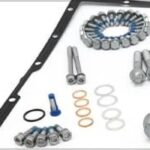The Autel MaxiCheck MX808 is a powerful and portable diagnostic tool for car enthusiasts and professionals alike. This guide dives deep into the functionalities and features of the MX808, providing valuable insights into its operation and capabilities. Understanding the Autel Mx 808 Manual is key to unlocking its full potential.
Understanding the Autel MX808: Features and Functions
The MX808 boasts a fast quad-core processor and an intuitive 7-inch LCD touchscreen with 1024×600 resolution, ensuring a smooth and user-friendly experience. This Android-based tablet combines the functionalities of the older MD802 and MaxiCheck Pro, offering a broader range of service functions. It connects to the vehicle via cable and offers wireless printing via Wi-Fi. While not as comprehensive as the MS906 or MS908, the MX808 provides extensive diagnostic capabilities.
System Coverage and Diagnostics
The MX808 offers comprehensive system coverage, including:
- Powertrain System: Read, test, and clear trouble codes.
- Body System: Read, test, and clear trouble codes.
- Chassis System: Read, test, and clear trouble codes.
- Info & Communication System: Read, test, and clear trouble codes.
It supports Auto VIN detection, auto-scanning of major systems, and live data streaming for individual system testing. The MX808 can communicate with various modules, including door modules, body controllers, and electronic modules. Furthermore, it supports all OBDII protocols and 10 test modes, such as Freeze Frame, Enhanced Mode 6, Vehicle Info, I/M Readiness, On-Board Monitor, and Component Tests. Data can be graphed, recorded, and played back for detailed analysis.
Bi-Directional Controls and Active Tests
A significant feature of the MX808 is its bi-directional control capabilities. This allows users to perform Active Tests and System Tests, providing more in-depth diagnostic insights. For specific vehicle coverage details, consult Autel’s official coverage website: https://www.autel.com/vehicle-coverage/coverage2.
Service Functions
The MX808 offers a range of service functions for modern vehicles:
- Oil Reset Service
- EPB (Electronic Parking Brake) Service
- BMS (Battery Management System)
- SAS (Steering Angle Sensor) Service
- DPF (Diesel Particulate Filter) Service
- TPMS (Tire Pressure Monitor System) Service
- IMMO (Immobilizer) Service
- Brake Bleed
- Injector
- Throttle
- WIN DR ROOF
- Seats
Detailed information on each service function can be found on page 43 (PDF page 50) of the User’s Manual. For users requiring fewer service functions, the MaxiDiag MD808P is an alternative option.
Vehicle Compatibility and Adapters
While the MX808 provides broad coverage, compatibility varies depending on the vehicle’s make, model, and year. Coverage is generally best for vehicles from 2006 to present. To verify compatibility, refer to Autel’s coverage details: https://pro.auteltech.com/measurecarApp-1-1.html?m=94&operatorType=1.
Certain vehicles require specific adapters:
- Chrysler vehicles with a CCD bus: Autel CCD adapter.
- FCA vehicles 2017 and newer: Autel 12+8 adapter cable.
These adapters are sold separately.
Package Contents and Specifications
The Autel MX808 package includes:
- MaxiCheck MX808 Android-based tablet
- Main cable (6-ft long)
- Hard carry case
- Quick Reference Guide
- Mini USB cable
- 1-year update subscription (renewals sold by Autel)
- User’s Manual
The MX808’s specifications include a Cortex-A9 processor, 32GB memory, a 7-inch LCD touchscreen, and various connectivity options. Refer to the original article for detailed specifications.
Conclusion
The Autel MX808 is a versatile and powerful diagnostic tool, offering extensive functionalities for a wide range of vehicles. Understanding its capabilities and utilizing the available resources, including the Autel MX 808 manual, will allow users to maximize its potential for accurate diagnostics and effective vehicle maintenance.


